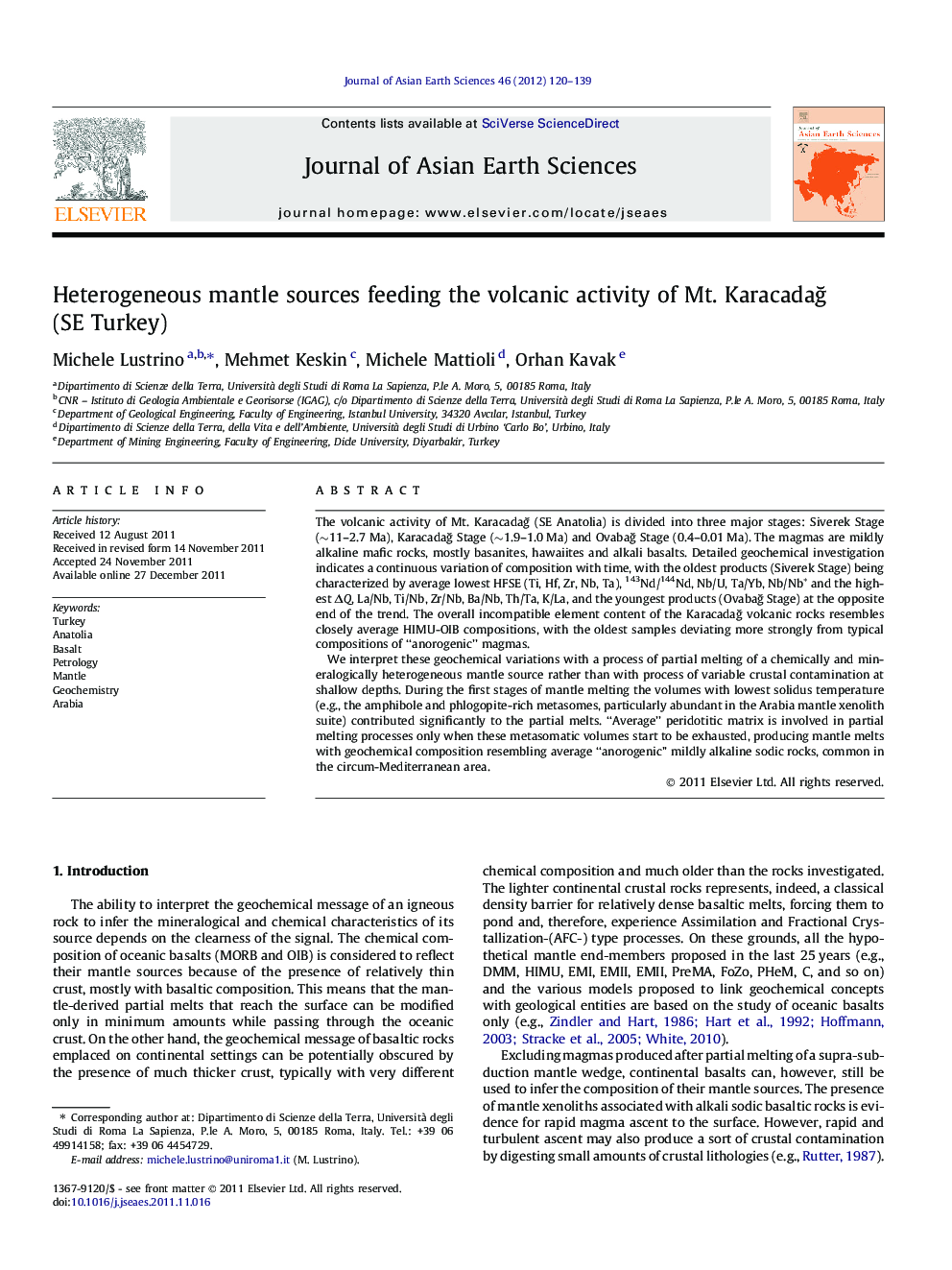| کد مقاله | کد نشریه | سال انتشار | مقاله انگلیسی | نسخه تمام متن |
|---|---|---|---|---|
| 4731539 | 1640418 | 2012 | 20 صفحه PDF | دانلود رایگان |

The volcanic activity of Mt. Karacadağ (SE Anatolia) is divided into three major stages: Siverek Stage (∼11–2.7 Ma), Karacadağ Stage (∼1.9–1.0 Ma) and Ovabağ Stage (0.4–0.01 Ma). The magmas are mildly alkaline mafic rocks, mostly basanites, hawaiites and alkali basalts. Detailed geochemical investigation indicates a continuous variation of composition with time, with the oldest products (Siverek Stage) being characterized by average lowest HFSE (Ti, Hf, Zr, Nb, Ta), 143Nd/144Nd, Nb/U, Ta/Yb, Nb/Nb* and the highest ΔQ, La/Nb, Ti/Nb, Zr/Nb, Ba/Nb, Th/Ta, K/La, and the youngest products (Ovabağ Stage) at the opposite end of the trend. The overall incompatible element content of the Karacadağ volcanic rocks resembles closely average HIMU-OIB compositions, with the oldest samples deviating more strongly from typical compositions of “anorogenic” magmas.We interpret these geochemical variations with a process of partial melting of a chemically and mineralogically heterogeneous mantle source rather than with process of variable crustal contamination at shallow depths. During the first stages of mantle melting the volumes with lowest solidus temperature (e.g., the amphibole and phlogopite-rich metasomes, particularly abundant in the Arabia mantle xenolith suite) contributed significantly to the partial melts. “Average” peridotitic matrix is involved in partial melting processes only when these metasomatic volumes start to be exhausted, producing mantle melts with geochemical composition resembling average “anorogenic” mildly alkaline sodic rocks, common in the circum-Mediterranean area.
► There is a clear geochemical variation of the products with age, not observed before.
► The oldest products are generated by metasomes concentrated in the upper mantle.
► Once these are exhausted, average peridotitic matrix melts giving HIMU-OIB-like melts.
Journal: Journal of Asian Earth Sciences - Volume 46, 2 March 2012, Pages 120–139